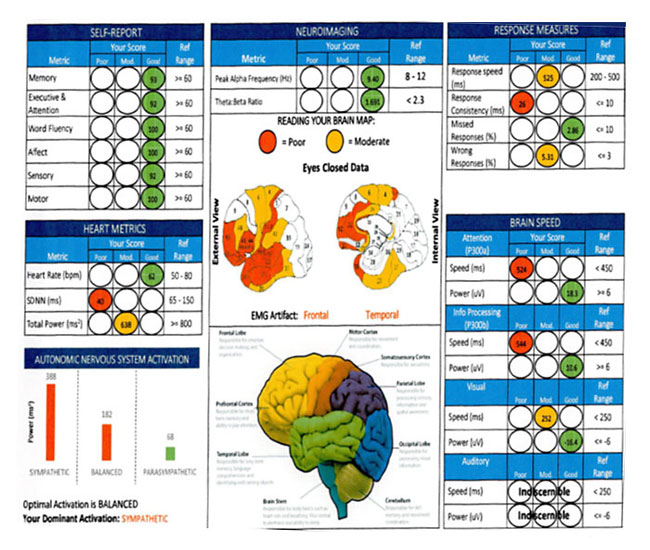Unlocking the Mysteries of the Brain Through qEEG Brain Mapping Techniques in Psychological Health Evaluation
Unlocking the Mysteries of the Brain Through qEEG Brain Mapping Techniques in Psychological Health Evaluation
Blog Article
Understanding the human mind is a complex task, especially when it pertains to psychological health. Conventional approaches of evaluation often depend on conversations and surveys, which can sometimes miss important aspects about how the mind operates. This is where quantitative electroencephalography, or qEEG, comes into the picture. qEEG is a specific method that assesses neural signals in the cerebrum. By analyzing these brainwaves, psychological health experts can gain important understandings into a individual's mental state, aiding to enhance assessment and treatment.
qEEG works by applying small electrodes on the scalp to record neural signals. These electrodes measure electrical signals produced by neurons, the cells in the brain that interact with one another. The data gathered is then analyzed and displayed as a set of waveforms. Each type of neural wave—such as alpha, beta, delta, and theta—corresponds to various mental states and functions. For instance, alpha oscillations are commonly associated with relaxation, while β waves are linked to engaged thinking and problem-solving. By examining these patterns, healthcare providers can detect irregularities that may suggest mental health issues.
One of the significant benefits of qEEG is its ability to provide objective information. In contrast to conventional assessments that depend on personal accounts from patients, qEEG offers a clear picture of brain activity. This clarity can assist minimize biases in diagnosis and lead to more accurate treatment strategies. For example, if a client is facing biofeedback for athletic training stress, qEEG can show specific patterns of brain function that are linked with stress conditions. This information allows mental health professionals to tailor treatments more effectively, whether through therapy, medication, or other approaches.
Moreover, qEEG can be particularly useful in monitoring treatment advancement. By performing qEEG evaluations at various stages during treatment, healthcare providers can monitor variations in brain activity over time. This ongoing evaluation helps determine whether a treatment is effective or if adjustments are needed. For example, if a patient is not responding to a particular medication, qEEG may show that their neural activity has not changed in a way that indicates improvement. This feedback loop can lead to more personalized and effective mental health care.
In conclusion, qEEG brain mapping is a powerful tool in the field of mental health evaluation. By providing objective information about neural activity, it improves the understanding of different mental health disorders. This method not only assists in precise assessment but also assists in tracking treatment effectiveness. As mental health professionals continue to explore the potential of qEEG, it holds potential for enhancing the lives of individuals dealing with psychological health challenges. With ongoing research and progress in techniques, the secrets of the brain may turn clearer, leading to better results for those in need of assistance.